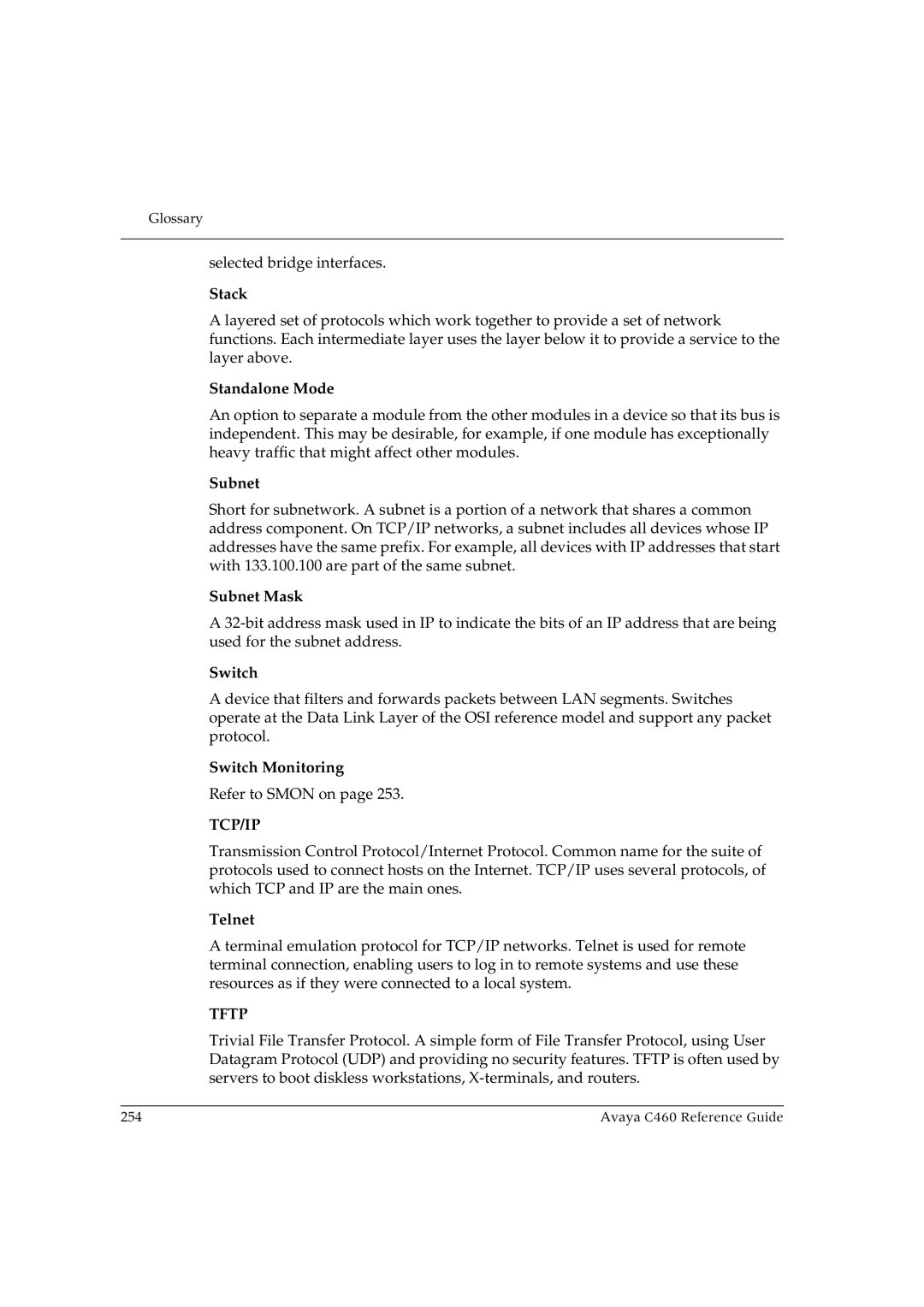
Glossary
selected bridge interfaces.
Stack
A layered set of protocols which work together to provide a set of network functions. Each intermediate layer uses the layer below it to provide a service to the layer above.
Standalone Mode
An option to separate a module from the other modules in a device so that its bus is independent. This may be desirable, for example, if one module has exceptionally heavy traffic that might affect other modules.
Subnet
Short for subnetwork. A subnet is a portion of a network that shares a common address component. On TCP/IP networks, a subnet includes all devices whose IP addresses have the same prefix. For example, all devices with IP addresses that start with 133.100.100 are part of the same subnet.
Subnet Mask
A
Switch
A device that filters and forwards packets between LAN segments. Switches operate at the Data Link Layer of the OSI reference model and support any packet protocol.
Switch Monitoring
Refer to SMON on page 253.
TCP/IP
Transmission Control Protocol/Internet Protocol. Common name for the suite of protocols used to connect hosts on the Internet. TCP/IP uses several protocols, of which TCP and IP are the main ones.
Telnet
A terminal emulation protocol for TCP/IP networks. Telnet is used for remote terminal connection, enabling users to log in to remote systems and use these resources as if they were connected to a local system.
TFTP
Trivial File Transfer Protocol. A simple form of File Transfer Protocol, using User Datagram Protocol (UDP) and providing no security features. TFTP is often used by servers to boot diskless workstations,
254 | Avaya C460 Reference Guide |
